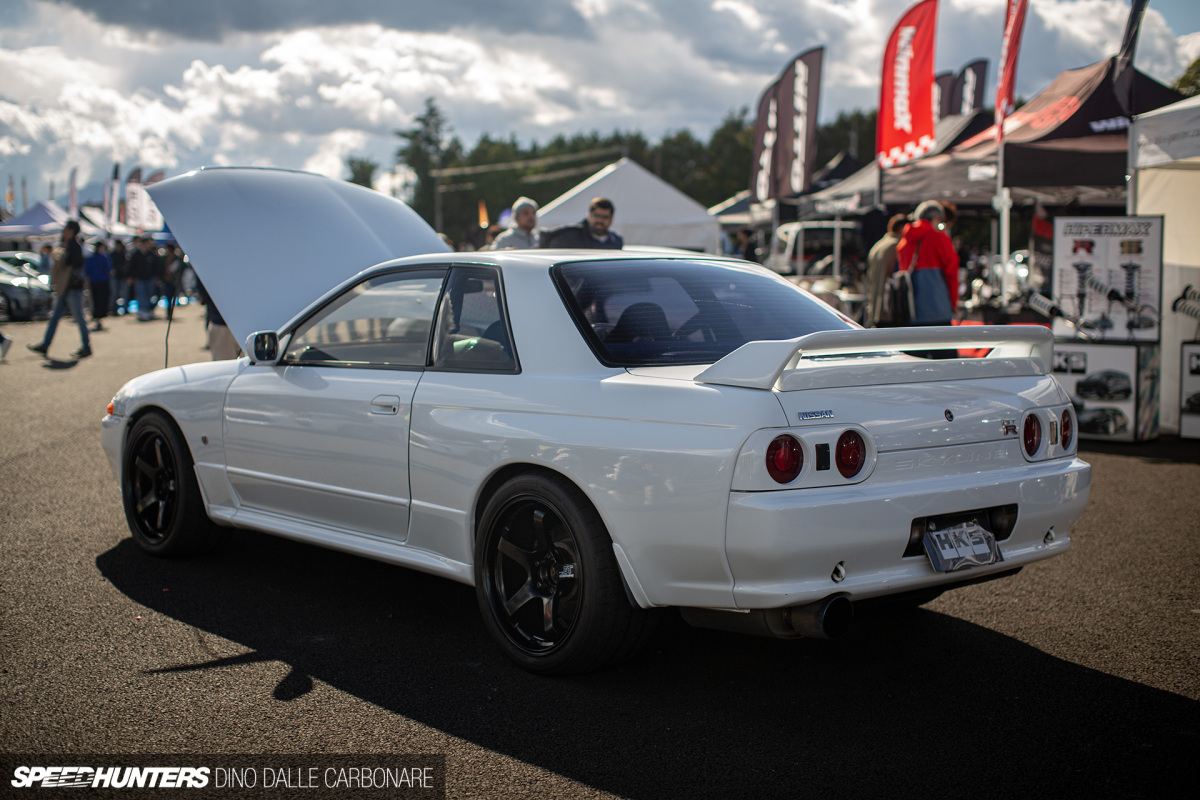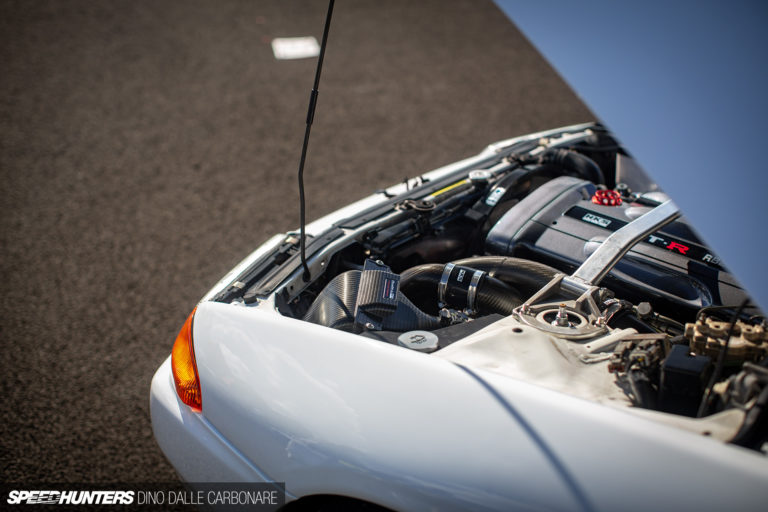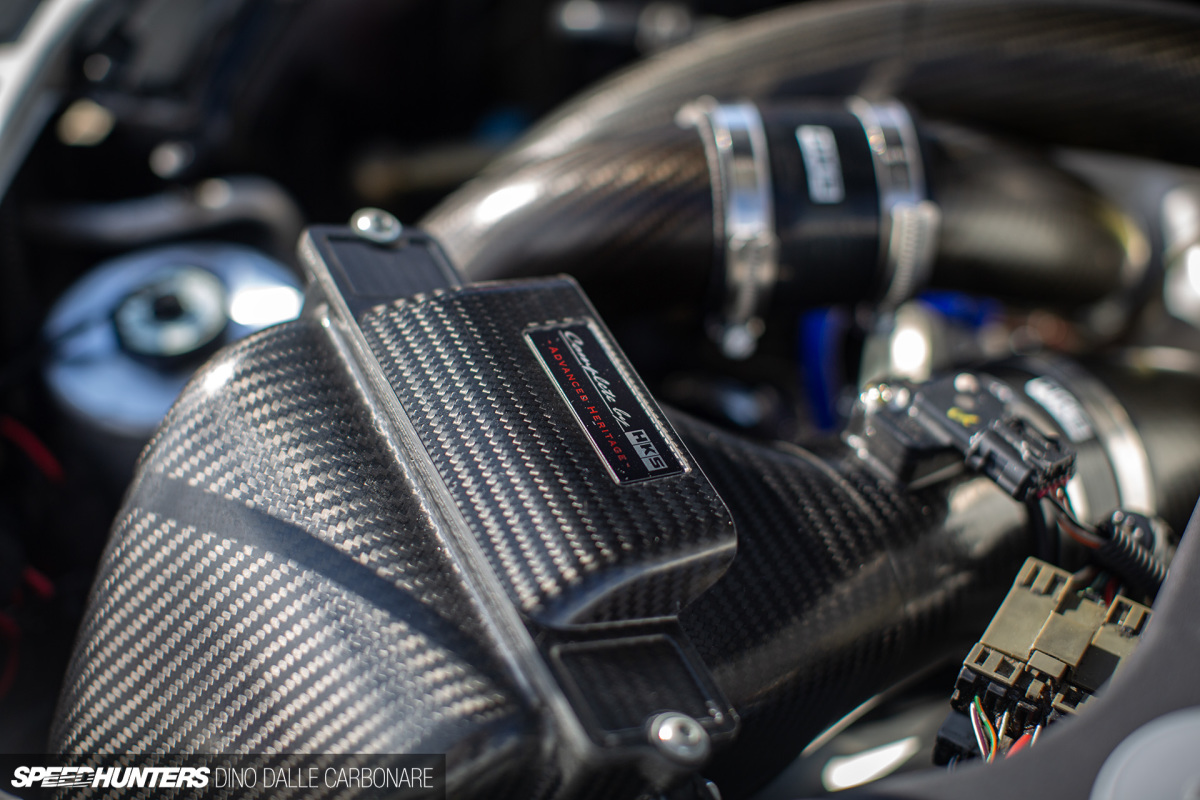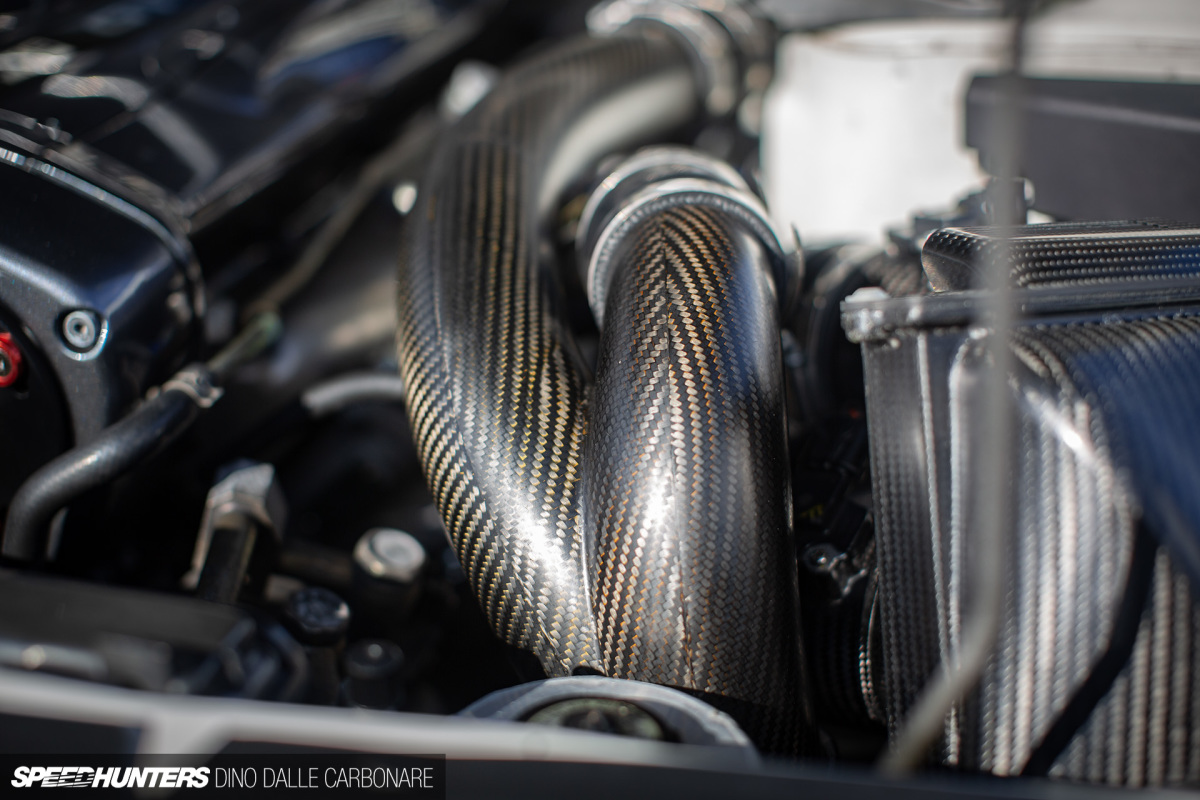For the past few years, HKS have been developing an all-new turbo piping and air box kit for the RB26. At the 2023 R’s Meeting held last weekend at Fuji Speedway, they finally showed what it looks like fitted.
The iconic Japanese performance parts maker has been developing higher-end Nissan RB products for some time, and the air box kit was first seen in a 3D-printed mockup state at the 2022 Tokyo Auto Salon. It’s part of HKS’s ‘Advanced Heritage’ program, which also includes a highly-reworked RB26 with vertically-mounted turbos, a twin-chamber carbon intake manifold with an electric throttle body, a revised injection setup and V-CAM on the exhaust side. Of all the HKS Advanced Heritage parts, the air box kit is likely to make it to production first. We think…
The kit was on display at Tokyo Auto Salon this year, but I’ve been patiently waiting to see it fitted to a car. At R’s Meeting it finally happened, with HKS’s R&D BNR32 Skyline GT-R unsurprisingly the recipient.

So let’s dissect it, and see what we are looking at. Bear in mind though, these are all just preliminary observations after seeing it fitted in a car for the first time, but I’ll try to touch on everything.


Similar to Nismo’s carbon fiber inlet pipe kit, half of the HKS package replaces the twin pipes that feed the compressed charge coming from the turbos into the intercooler. That’s the first thing to note, as this kit has been developed to be used exclusively with GT25-sized turbos. That includes the R32 GT-R’s stock turbos, N1 turbos, HKS GT2530s, HKS GT-SSs and the new HKS GT3 turbos in both sizes offered. If you’re wanting to run this air box with a larger twin-turbo setup with bigger flanges, you’re out of luck for now.

Quite simply, turbos outside of the GT25 realm would angle the pipes differently and not allow the carbon air box to physically fit.

This prototype kit uses R35 GT-R airflow meters, so if you have ditched your AFMs in favor of a MAP sensor setup then you will need to wait for an AFM-less version, if HKS will indeed be releasing something like that. Seeing how the AFM is fitted into a separate section that could easily be replaced by one without the mounting flange, I’d say it’s highly possible.

To not hinder flow, the piping is a little straighter compared to the Nismo kit. While this will be good for efficiency and response, it does open up a rather large gap between the engine itself and the piping, allowing the heat shielding over the exhaust manifolds and the oil lines to be very visible. For reference, the Nismo Inlet Pipe Kit (aluminum or carbon) tucks tighter in towards the engine and makes use of the dimple in the exhaust cam cover.

One thing that stood out me, is the fact HKS seem to have ditched the Wiggins clamps they had on the 3D-printed mockup in favor of silicon sleeves and regular hose clamps. Personally, I think Wiggins W900 Series clamps would have added so much more, both in looks and performance. But hey, maybe HKS will offer a version with them.

HKS’s development BNR32 runs their complete RB28 engine package – without the V-CAM system – resulting in a strong and reliable 500hp to 600hp depending on settings.

I think the next step here would be for us to get behind the wheel of this car and report back on how the carbon piping and air box performs out on the street. Hopefully we can make that happen.
In the meantime, stay tuned for my main coverage of R’s Meeting 2023 – there’s a lot to see.
Dino Dalle Carbonare
Instagram: dino_dalle_carbonare
dino@speedhunters.com








